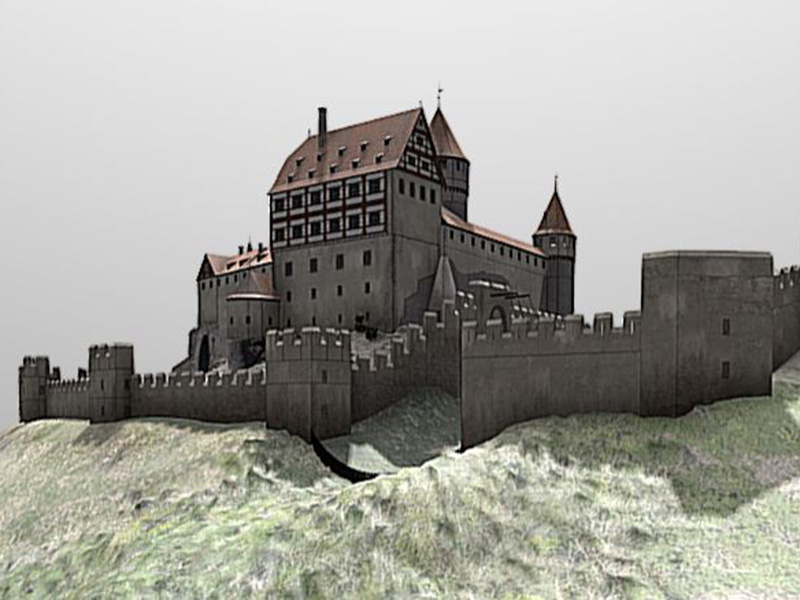
Audio guide
Hohennagold Castle
An audio-visual journey through the castle's history.

Audio guide
An audio-visual journey through the castle's history.




Take an exciting journey through time and discover the history of the Hohennagold Castle with our audio guide and immerse yourself into medieval castle life. Impressive images of the 3D-reconstruction and background information bring the former Hohennagold Castle back to life.
Two epochs dominate the history of the Castle Hohennagold: the Celtic Age and the Middle Ages. Around 500 B.C. there was a fortified celtic settlement on the Castle Mountain, which was supposedly the home of a Celtic Prince. There are no visible remains of this fortification.
During the 8th Century, the Counts of the Province of Nagold (Nagoldgaugrafen) ruled over the franconien King’s Court, which Remigius Church was a part of. It is possible, that there was a castle on the mountain at this time. Descendents of the Counts of the Province of Nagold were the Counts, and later the Palatine Counts, of Tübingen. The oldest remains of the castle date before 1200. Through a marriage at about 1230, Nagold then belonged to the Counts of Hohenberg, who then expanded the fortification. In 1363, the Counts of Württemberg bought Nagold with its castle from the impoverished Counts of Hohenberg.
Shortly before the end of the Thirty-Years-War (1618-1648), on the first Sunday in Advent 1645, troops of the Electorate of Bavaria conquered the fortification and destroyed it. By order of the Duke of Württemberg, the castle was torn down. Almost 400 years later, we can discover how Hohennagold looked in a digital reconstruction.
And lastly, the answer to the question: „Fort or Castle?“
Hohennagold was built as a medieval fortification. A castle or palace is for representation, for extravagant parties, hunts and other leisure activities of the nobility. Sometime after 1363, Hohennagold was called the „Mountaincastle of Nagold“. This “fortified castle” had an important military function and was used by the Counts and Dukes of Württemberg as a temporary residence while traveling. The term used in english is „Hohennagold Castle“.
The three most important sources are the engraving from Matthäus Merian dated 1643, correspondence of the administrators of Nagold from 1644 (before the destruction of the castle) and from 1645 (after its destruction), as well as reports about archaeological excavations on Hohennagold during the 1930s.
The complete 3D reconstruction model, created by the architectural historian Apl. Prof. Dr.-Ing. Julian Hanschke, can be explored here (external link in German). The reconstruction shows the condition of the castle ruins before they were destroyed in 1644.
Texts: Judith Bruckner, Julian Hanschke
Editorial: Judith Bruckner
Scan the code to view this page on your smartphone or tablet.
We use cookies to provide you with the best possible browsing experience. Please note that when you accept only essential cookies, some of the website features may be unavailable or limited. You can find more information in our Privacy policy.